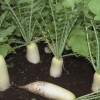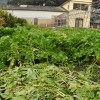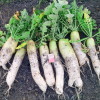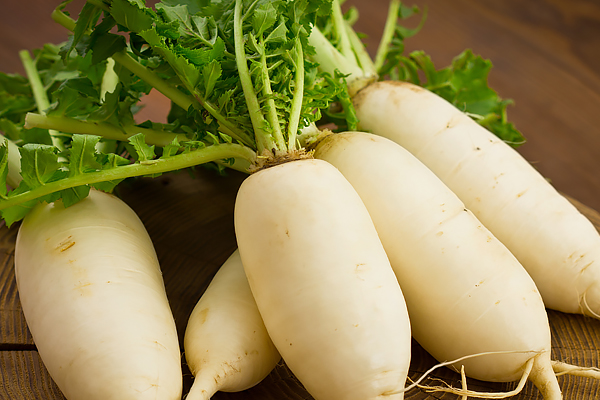When to clean Daikon and how to store it: effective methods
Content
When to clean up
When to harvest Daikon and how to store it depends on the time of planting, the ripening time of each specific variety, the climatic conditions of the area, even whether it is grown in open or protected ground. Depending on the variety, this vegetable ripens from 40 to 70 days from the moment of germination, then after that it needs to be removed, leaving the root crop in the ground (which means allowing it to shoot) is possible only if you want to get your seeds. And then it is better to dig it up, and after a few days plant it again.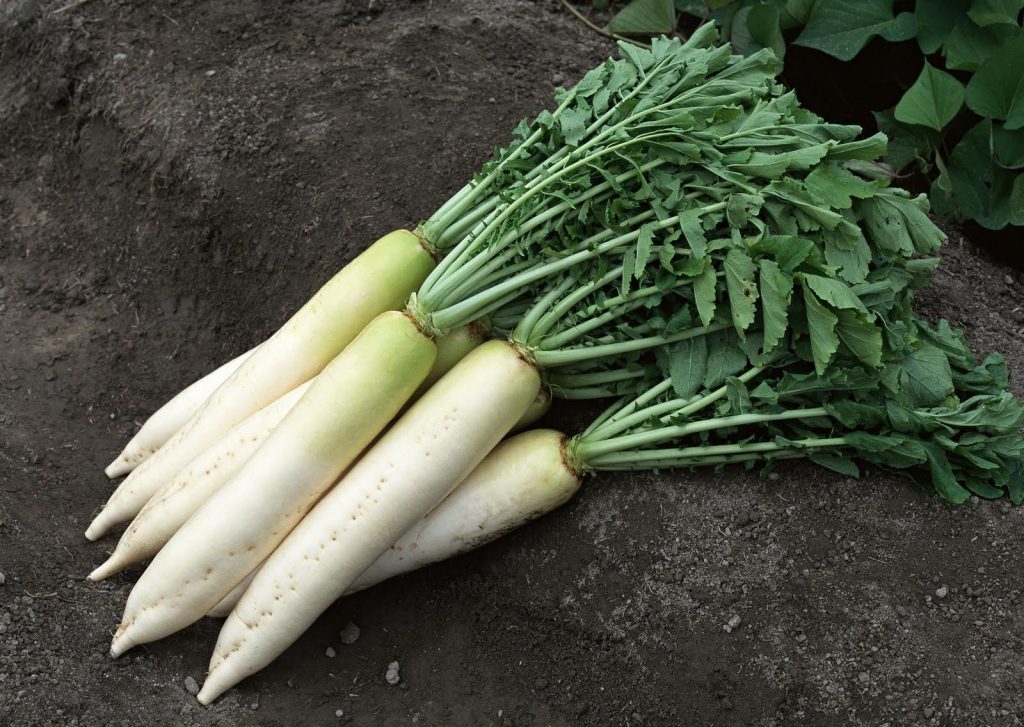
Cleaning and storage depends on the variety - summer or winter Daikon you grow. These names are rather arbitrary, since in reality the summer is sown in spring, and harvested in the first half of summer, as soon as the roots reach maturity.
Any delay threatens the beginning of peduncle formation, the only exceptions are hybrids resistant to shooting. At this time, early and early ripening varieties are usually grown, they must be consumed immediately, they can only be kept in the refrigerator for a few days, and there can be no talk of any long-term storage.
The so-called winter varieties are sown in late July or early August, how to store Daikon, they think about this harvest. When to remove Daikon from the garden? This must be done before the onset of frost. Usually the crop is harvested in September, for this you need to choose a cool, dry day. Root crops are pulled out (if the looseness of the soil allows) simply by hand or using a pitchfork, shovels. It is very important to do this before the onset of frost, otherwise the root crops, especially the part protruding above the ground, will suffer. Then you can not dream of any storage. Therefore, of course, the terms indicated for each variety are of great importance, they must be adhered to, but the threat of frost should be a priority. 
In Siberia, often in the Moscow region and to the north, it is necessary to harvest root crops that have not reached their maximum. This is not a problem for the taste and nutritional properties of the crop, it is only a pity that Daikon may look more like a white carrot than a "big root", as its name suggests. In the south, on the contrary, the crop can be harvested in the middle of October, so a lot depends on the weather and climatic conditions. When growing a winter Daikon, the gardener should always know the weather forecast.
Video "How and when to clean Daikon"
In this video you will learn how and at what time to collect the radish.
How to store
After removing the root crops from the ground, they must be allowed to lie on the edge of the garden for a couple of hours until the remnants of the soil dry up and crumble. You cannot wash or peel them, you can only gently shake them off with your hands or with a soft cloth so as not to damage the thin skin. They should not dry out in direct sunlight, it is more effective to keep them in some shade.
How to preserve the summer Daikon is not a question - it needs to be rinsed with water and kept in the refrigerator for those few days, which will be enough to eat it. It is unlikely to withstand even a week - it will become soft, lethargic, start to rot or mold.
You can only store the winter harvest. Do this in a cellar, basement or refrigerator.
Fresh Daikon
If the entire crop consists of several large root crops of Japanese radish, then each of them must be wrapped in an air-permeable bag and folded on the bottom shelf of the refrigerator (or in the cellar). So they can keep their freshness for 3 or 5 weeks. Of course, before putting them in the refrigerator, they cannot be wetted, but only dried and slightly shaken off of excess soil. It goes without saying that these roots must be flawless, with clean, undamaged skin, otherwise they will not last weeks.
The rich harvest, which we want to eat all winter, is best sprinkled with clean wet sand, put in boxes so that the radishes only touch the sand, and take it to the cellar. A clean cellar, free from fungus and rodents, with a humidity of 70 to 90 percent, with an air temperature of +1 to +5 degrees - these are the ideal conditions that will help keep Daikon almost until spring. The main thing here is the temperature and lack of sunlight, the sand can be periodically sprayed with water to maintain the desired humidity in the boxes. If the sand dries up, it will draw moisture from the vegetables and they will wither.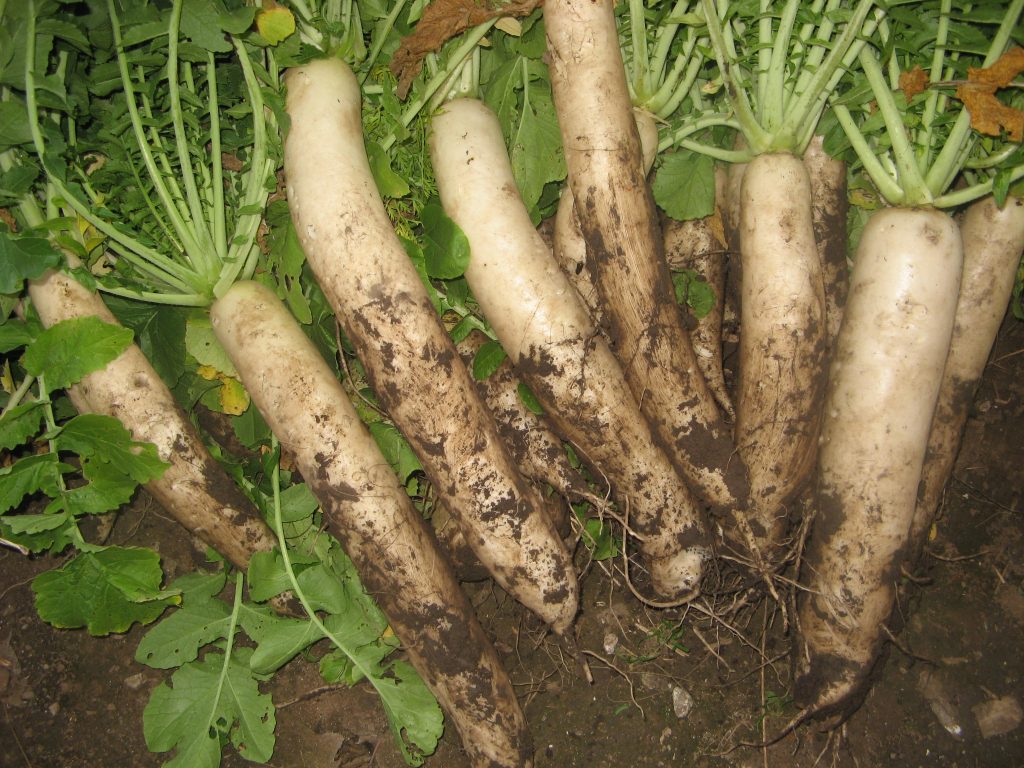
In the absence of a cellar, an unheated closet or an insulated loggia will do. On the loggia, you will have to build an insulated box in order to maintain the declared temperature even in the most severe frosts.
Before laying the crop for long-term storage, it is carefully examined, those root crops are rejected, on which damage to the skin or the beginning of the decay process is noticeable (even if it is just a soft speck of a different color). Damaged root crops themselves will not last even a month, but, worst of all, they can ruin the entire crop, becoming a breeding ground for bacteria.
Freeze Daikon
You can freeze root vegetables in small portions, after cutting or rubbing them on a coarse grater. The grater should be large enough so that Daikon does not give juice immediately, this will create some inconvenience - the shabby mass may freeze into a lump, the juice will become ice. A small (portioned, if possible) amount of crushed root vegetables is placed in a bag or a special plastic container, placed in a freezer. Take out and defrost at room temperature before use. This method allows you to preserve most of the nutrients, provided it is frozen once. You cannot defrost, and then freeze again, so the vitamin root vegetable will turn into a tasteless sluggish mass devoid of any benefit.
Radish juice
Juice from Daikon is very useful, almost all useful substances from root crops get into it (those whose stomachs irritate the fiber of this vegetable prefer to drink it), you can prepare it for the winter if it is not possible to store whole root crops. This will be an excellent solution in case of mechanical damage to the crop during harvesting.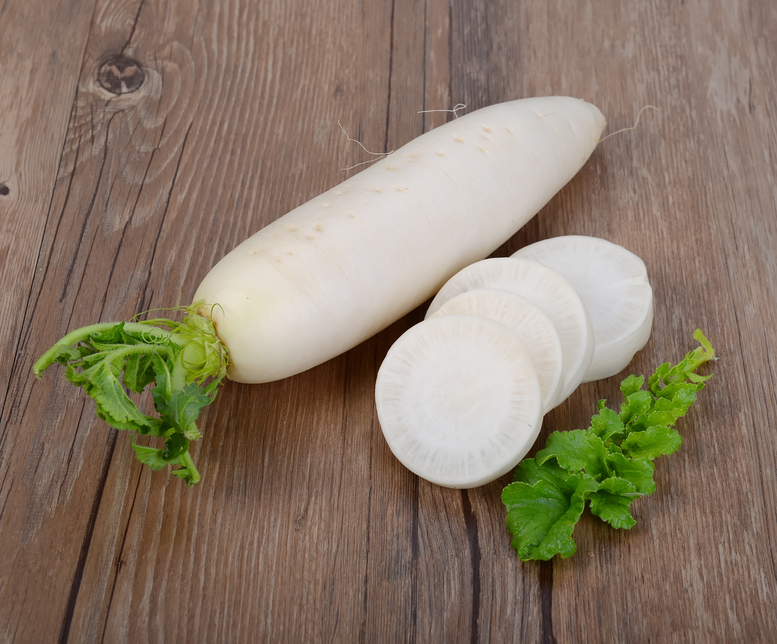
Using any juicer, juice is prepared, poured into sterilized glassware (jars or bottles), then pasteurized in a water bath for 30 minutes. After that, the containers are sealed and placed for long-term storage in a dark, cool place.
Conservation
Fresh Daikon is used to make a salad by mixing it with carrots, seasoned with vegetable oil, mayonnaise or oil-lemon dressing. Various ingredients are added to it, most often vegetables and seafood. This salad base can be preserved. To do this, chopped (cut into small cubes or shabby on a coarse grater) root vegetable, together with carrots, is poured with marinade, tightly closed and stored in a cool place.Marinade is made from water, vinegar, salt, sugar, pepper and aromatic herbs, must be brought to a boil, and then cooled. Such pickled Daikon can be a base for a winter salad, an independent snack or an addition to a meat or vegetable dish.
You can make a more complex marinade with a mixture of apple cider and rice vinegar, add lemon zest and turmeric, garlic and some other spicy seasoning, cut the root vegetable into beautiful rings (or half rings, if it is very large), and after a couple of days amaze guests with an incredibly beautiful and delicious snack. If everyone likes it, then you can preserve the vegetable in such a marinade and enjoy it all winter.
This wonderful Japanese radish is worth saving for the winter, especially since all of the above methods are very gentle on useful substances that will come in handy in the winter cold.
Video "How to keep Daikon fresh for a long time"
This video will show you how to keep this beautiful vegetable fresh and tasty for as long as possible.

